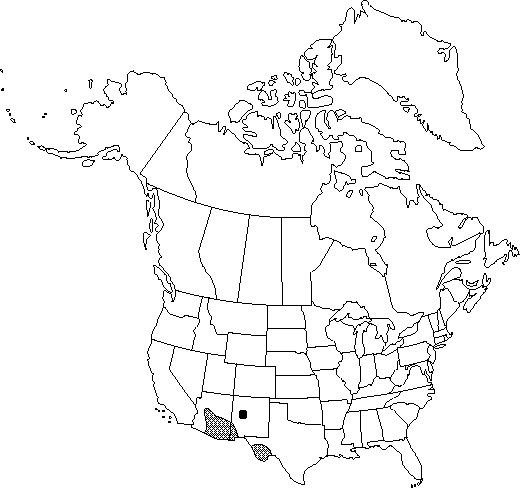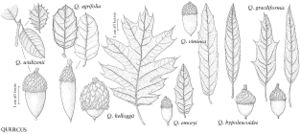Quercus emoryi
in W. H. Emory, Not. Milit. Reconn., 151, plate 9. 1848.
Trees or shrubs, evergreen, to 15 m. Bark dark brown to black, deeply fissured. Twigs dark reddish brown, 1-3 mm diam., pubescent. Terminal buds reddish brown, ovoid to subconic, 2.5-6.5 mm, glabrous except for tuft of hairs at apex, occasionally hairy on distal 1/2. Leaves: petiole 3-7(-10) mm, pubescent. Leaf blade ovate to narrowly oblong to obovate, planar, 28-95 × 15-45 mm, base cordate, margins entire or spinose, with up to 13 awns, apex blunt to acute; surfaces abaxially glabrous except for tuft of tomentum on each side of midrib at base of blade, rarely completely glabrous, adaxially not rugous, glabrous or with a few hairs along midrib. Acorns annual; cup cup-shaped, 5-7.5 mm high × 7-12 mm wide, covering 1/4-1/2 nut, outer surface pubescent to sparsely puberulent, inner surface pubescent to floccose, scale tips appressed, blunt; nut ellipsoid to oblong, 10-18 × 6-10 mm, glabrous to puberulent, especially at apex, scar diam. 3-5.5 mm.
Phenology: Flowering spring.
Habitat: Foothills and slopes
Elevation: 1000-2200 m
Distribution

Ariz., N.Mex., Tex., n Mexico.
Discussion
Quercus emoryi reportedly hybridizes with Q. graciliformis (= Q. ×tharpii C. H. Muller).
Selected References
None.
